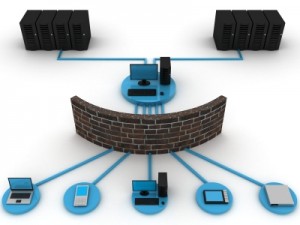I’ve spent the past 10 years working closely with businesses that operate in the small-to-medium (SMB) market. I work directly with decision makers to assist with the preparation and planning of budgets, strategic plans, business continuity strategies and a wide variety of technology needs. During the course of this journey, it’s been an eye-opener to enter into a new engagement only to discover the fundamentals needed to secure a business network and provide a stable working environment are all too often overlooked.
The establishment of a sound IT infrastructure seems to have been cut to the quick as the over-riding decision to satisfy the end user and reduce costs, without seeking proper guidance, rears its ugly head. While the initial result might seem satisfactory at first, questions inevitably peek above the surface, searching for answers as to why the overall productivity and efficiency of the network seems to have fallen by the wayside.
•Why is the system running so slow?
•Why can’t I access the network anymore? (print, access file shares, etc.)
•I accidentally deleted a file…Can we retrieve those files from the “network”?
Regardless of what the situation is, failing to implement the proper IT foundation from the ground up, while designing and installing a network, WILL come back to bite you. I absolutely guarantee it. I’ve witnessed it too often.
The most unfortunate aspect of this scenario is that it’s common for a business to become complacent and embrace unnecessary work-arounds, fostering a “band-aid” approach to the evolution of the company’s business technology needs. The effects this situation has on a business are profound. Yet, many times the leadership of the organization cannot identify the root cause, resulting in a full-blown mess.
Here are some steps to turn things around and “right the ship”:
•Perform a hardware and software audit – Inspect warranty information, purchase history, patch management for applications and licensing compliance.
•Review and/or create policies – Identify and review existing network usage policies such as data retention, virus prevention and security protocols.
•Learn technology industry best practices – Even if this requires bringing in outside representation to provide expertise, it’s a wise investment.
•Develop an action plan and stick to it – Regardless of what your budget and/or resource constraints are, develop a plan that incorporates those constraints and stick to the plan.
The simple facts are that we are now expected to perform in a business environment that does not allow organizations to turn a blind eye to the role technology plays in driving business processes. With each passing day, the demands placed on businesses to perform are ever-increasing. Technology is the difference maker…plain and simple.